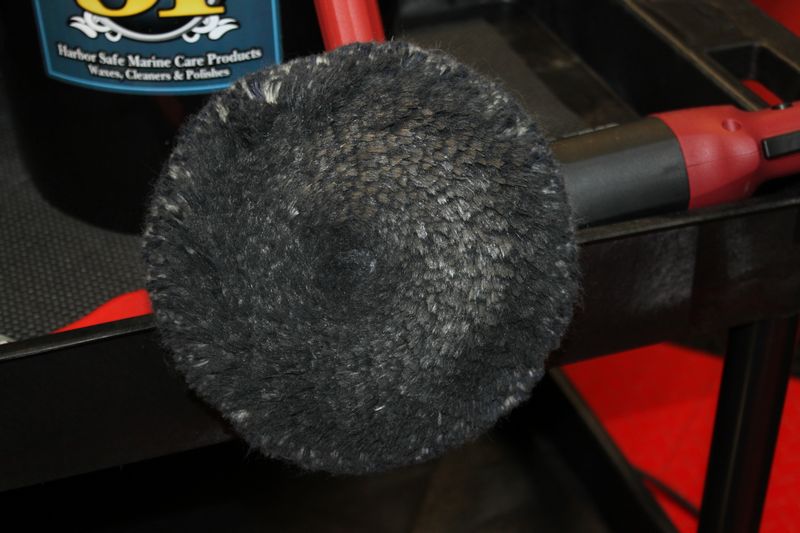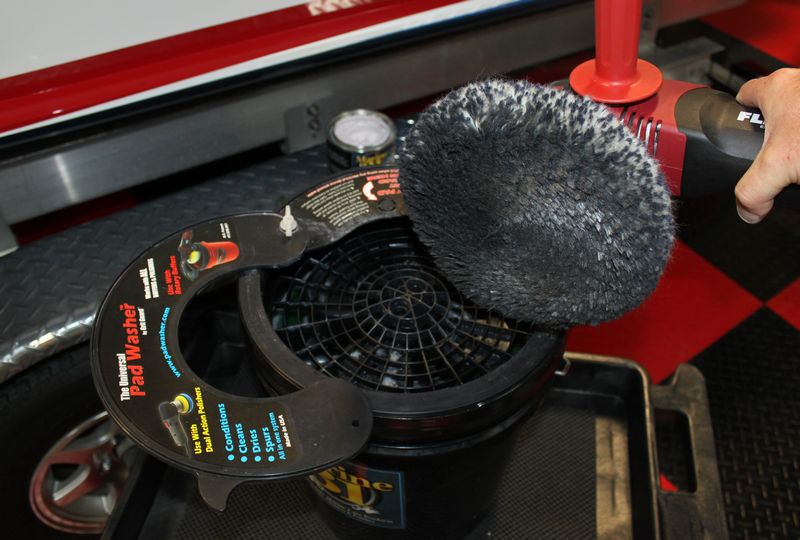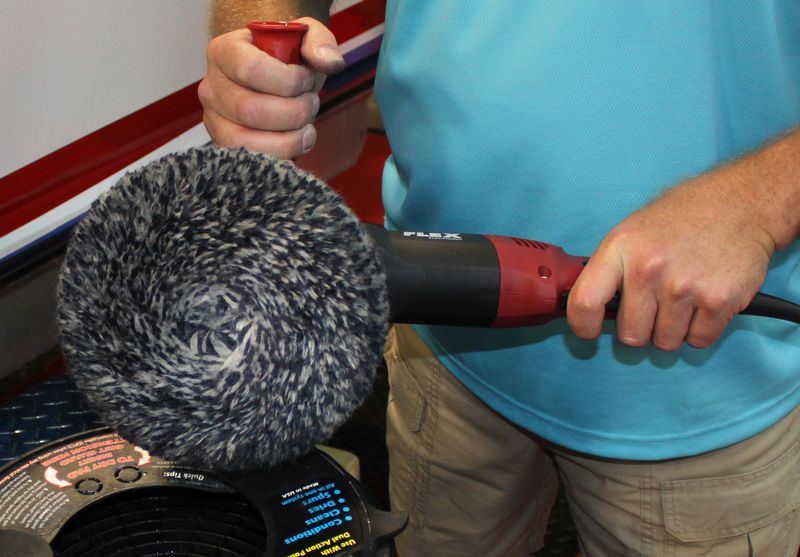Nice video Roshan and just to chime in...
Pad washers are a real asset for anyone that does a lot of compounding on paint or gel-coats or even metal polishing.
This is especially true when using wool pads with rotary buffers. A clean wool pad will buff more smoothly after all the gunk is cleaned off in a pad washer than a pad just cleaned with a spur.
Here's an example for metal polishing I wrote last week...
How To Machine Polish Oxidized Aluminum Diamond Plate
Pad Cleaning
Machine polishing oxidized aluminum is going to really load the face of your buffing pad up with oxidation and spent metal polish.
Step 1
Place one full scoop of Marine 31 Polishing Pad Cleaner into your Marine 31 Pad Washer and mix thoroughly.
Step 2
Place your buffing pad into the pad washer and close the splash guard lid.
Step 3
Run the polisher around 1000 RPM to 1300 RPM and at the same time
pump the pad up and down against the insert inside the pad washer.
After pumping the pad up and down for about a minute, lift the polisher up to lift the buffing pad off the pad cleaning insert and then increase the RPM's to the high setting to sling out any excess water from your buffing pad using centrifugal force.
Done!
Your pad will now be clean and ready to put back to work machine buffing metal.
Important
Dedicate your pads for the way in which the are used.
Have dedicated pads for metal polishing, fiberglas gel-coat polishing and paint polishing, don't mix-and-match pads to different products and surfaces. For example, don't use a pad you've been using to buff oxidized aluminum to buff a gel-coat finish.
Also, after all pad cleaning is over from your metal polishing project, be sure to wash out and thoroughly clean your pad washer before mixing fresh pad cleaner and water to clean pads being used on gel-coat or paint.








